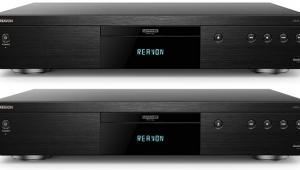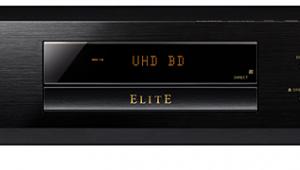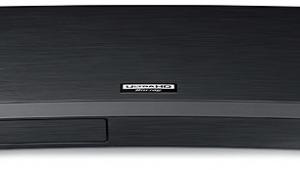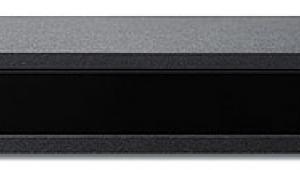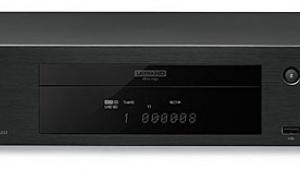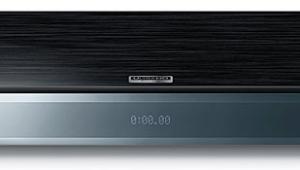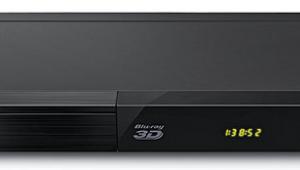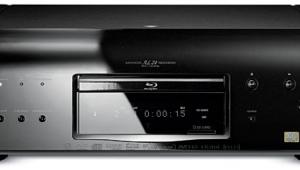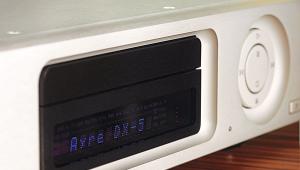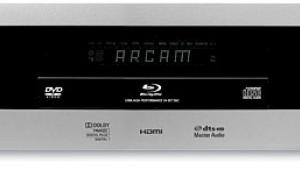Cambridge Audio CXUHD Ultra HD Blu-ray Player Review

AT A GLANCE
Plus
Dolby Vision compatible
High-quality Blu-ray video upconversion
Plays SACDs, DVD-Audio discs, and Blu-ray 3D discs
Minus
No analog audio outputs
Remote control not backlit
Pricey compared with
competition
THE VERDICT
Cambridge Audio’s CXUHD provides faultless video performance in a streamlined package.
Cambridge Audio is a British manufacturer known for their sleek, well-built, affordable audio components and speakers. They are also known for their universal disc players, which are based on Oppo Digital units but sold minus the built-in digital-to-analog converters and analog audio outputs. According to Cambridge, this is meant to “decrease interference to the signal, improving quality by reducing video noise.” Since the brand makes A/V receivers with built-in DACs designed to mate with their players, there’s some sound reasoning behind that strategy.
The company’s newest $700 CXUHD Ultra HD Blu-ray player is based on the platform for Oppo’s $549 UDP-203. Other than the Oppo’s 7.1-channel analog output jacks, the two players are essentially the same, right down to the basic GUI and setup menus. They also provide compatibility with both the HDR10 and Dolby Vision formats of high dynamic range (HDR), and besides Ultra HD Blu-rays, they can play regular and 3D Blu-rays, DVDs, CDs, SACDs, and DVD-Audio discs.
Like the Oppo, the Cambridge omits streaming services like Netflix, Amazon, and Vudu, though its wired and Wi-Fi network capability can be tapped to stream video and audio files from a DLNA server. Audio formats supported by the player include AAC, MP3, FLAC, and WAV. It can also be set up to output a DSD bitstream when playing SACDs.
While the CXUHD doesn’t look substantially different from the UDP-203 (which I had on hand for comparison during this test), it does have a nicer design, with rounded edges and fewer buttons cluttering its brushed-metal faceplate. There’s also no front-panel USB port on the CXUHD—or a headphone output, for that matter. On the other hand, unlike some other lower-priced players on the market, the CXUHD has substantial build quality, something evident in the smooth action of its disc tray and in the presence of an IEC power input on the back panel.

Other back-panel connections include a pair of HDMI outputs (one HDMI 2.0a and the second audio-only), coaxial and optical digital audio outputs, and a pair of USB 3.0 ports. In addition, there are Ethernet and RS-232 control ports and an IR trigger input and output.
Cambridge’s remote control has a nicer look than the one that comes with the Oppo, and its rubbery back gives it a nicer feel as well. Buttons are provided to directly control most player features, from selecting the Pure Audio mode (which turns off all video circuits) to switching the video output format. Unlike Oppo’s remote, the keypad on Cambridge’s wand isn’t backlit, and it also omits buttons to directly call up picture adjustment menus and enable the player’s AB Replay mode. The latter button is one that most people don’t regularly use (outside of video reviewers, that is); the former is one that won’t likely be missed except by tweakers who often adjust picture settings during viewing.
Setup
To test the CXUHD, I connected its main HDMI 2.0a output to a Vizio M65-E0 LCD Ultra HDTV (January 2018 and our website) and its second, audio-only HDMI output to an Anthem AVM 50v preamp/processor. The speaker system used for the evaluation was a GoldenEar Technology suite: Triton Two powered towers for the front left/right channels, Triton Five passive towers for the surrounds, and a SuperSat 50c for the center.
For DLNA music streaming, I tapped my Netgear Orbi 802.11ac router’s 5-gigahertz band to send audio to the player, with JRiver Media Center 21 software for Mac OS X controlling playback. I also connected a Roku 4 streamer to the player’s HDMI input for viewing videos from Netflix, Vudu, YouTube, etc. Although the Roku 4 isn’t compatible with HDR, the HDMI 2.0 input on the Cambridge doesn’t support HDR passthrough, so no loss there.

